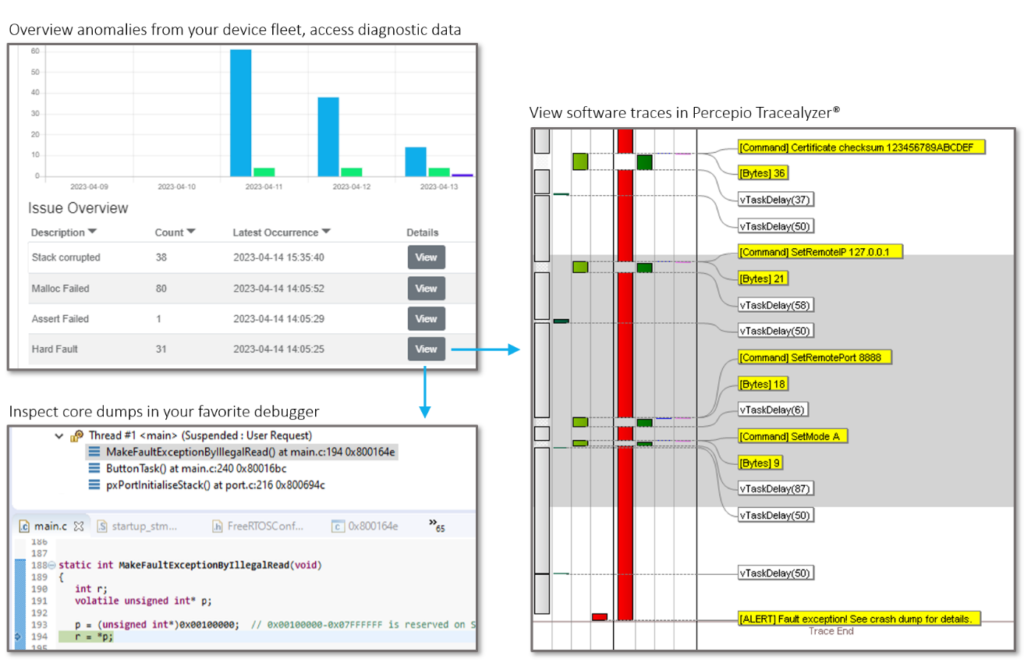The smart home market is exploding, with over 100 million users predicted in the US alone by 2028. As this rapid growth continues, companies must ensure their innovative home systems are secure as well as convenient.
One such company wisely took preemptive action to safeguard their systems. They had developed an advanced smart home system that used a variety of sensors and actuators to seamlessly control temperature, lighting, security, and entertainment in customers’ homes. The team were proud of what they had built but knew that there were many potential bugs and vulnerabilities that could impact system performance and safety. They were also aware of the responsibility that comes with scale – if vulnerabilities weren’t swiftly addressed, many users could be impacted by bugs and hacks.
That’s why the CTO implemented Percepio DevAlert, a cloud-based observability solution for monitoring IoT edge devices in real-time. With rising consumer fear of smart home cyberattacks, they needed this extra line of defense.
With DevAlert, they could detect crashes, errors, and other software anomalies during system testing, field trials, and in customer operation, and get detailed diagnostic information to enable rapid response. DevAlert is purpose-built for small edge processors and IoT microcontrollers running RTOS-based software, with security, privacy, transparency, and scalability in focus.

Then came the day the team had feared. One morning, they received an urgent DevAlert warning of a stack corruption issue on a customer’s system, indicating a potential buffer overrun or a code injection attack. Opening the DevAlert dashboard, they found a wealth of diagnostic data which allowed them to fully analyze the incident – a core dump, Tracealyzer trace, call stack, variable values, and source code. They quickly saw that the corrupted stack contents revealed some suspicious data that looked like malicious code.
The company realized a hacker had exploited a vulnerability in the wireless communication protocol as an entry point – one of consumers’ top fears. Alarms were raised, experts gathered, and plans made to patch the vulnerability across all affected devices via an immediate firmware update. Customers were also contacted about the incident and its resolution.
Thanks to DevAlert’s real-time monitoring and detailed diagnostics, the company was able to identify and fix the problem before major damage occurred. They also learned from the experience and improved their software quality and security practices.
The company was relieved they had chosen DevAlert to provide oversight on their customers’ systems. The observability it enabled allowed them to catch the hacker red-handed and avert a crisis. They could now assure users that security is a top priority alongside convenience and comfort.
















